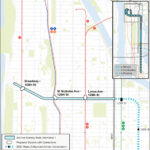As a historian with a particular interest in Victorian crime and policing, I approached the BBC’s Ripper Street tv show with a mixture of anticipation and trepidation. The enduring, albeit morbid, fascination with ‘Ripperology’ often overshadows the broader realities of Victorian crime and law enforcement. My concern was that a series titled Ripper Street might become overly fixated on the infamous Whitechapel murders, potentially distorting a more comprehensive understanding of the era. However, having watched the initial episodes, I found myself pleasantly surprised.
The first episode of Ripper Street effectively used the ‘Ripper’ narrative as an initial draw for viewers, but it quickly became apparent that the series aimed to move beyond this singular obsession. The overarching message, both for the audience and the characters within the show, was the necessity of looking beyond one sensational case to confront the wider spectrum of crime in Victorian London. The subsequent episodes have further distanced themselves from the immediate shadow of the Whitechapel murders, exploring new cases and themes within the same historical setting.
One of the strengths of Ripper Street lies in its incorporation of intelligent details that enhance the believability of the narrative. The language and speech patterns adopted by the protagonists struck me as convincingly representative of Victorian England. The writers should be commended for their use of appropriate contemporary vocabulary, seamlessly integrating terms like “snide notes,” “bullies,” and “derbies” into the dialogue.
Furthermore, the series accurately acknowledges the Metropolitan Police’s early adoption of technological advancements. The inclusion of elements like the telegraph and electric lighting subtly underscores the progressive aspects of Victorian policing. The cultural backdrop of the show is also richly rendered. Scenes depicting bare-knuckle boxing in pub backrooms, the perhaps casual and brutal use of violence by the police, and the burgeoning fascination with photography all contribute to an authentic portrayal of the era. Even small details, such as the use of a belt buckle as a weapon in the second episode, resonate with historical accuracy, recalling similar practices among Manchester scuttlers, as documented by Davies (2009).
However, Ripper Street is not without its flaws. The portrayal of misogyny, while undeniably present in Victorian society, is sometimes presented with a lack of nuance. This aspect has drawn criticism, with some questioning whether such explicit depictions of misogyny and violence are truly necessary or appropriate for contemporary audiences. While historical accuracy is important, the critical question is whether these elements, however historically sound, serve the narrative effectively for a modern viewership (D’Cruze 2000, D’Cruze 1998, Wiener 2006, Emsley 2005, Wood 2004). Conversely, some details appear deliberately designed to resonate with a modern audience. The detailed depiction of body dissection, for example, is a trope well-familiar to contemporary viewers of crime dramas, and the thematic concern with pornography echoes contemporary debates. These elements, however, arguably contribute to making the show accessible and entertaining for a wider audience.
While some plot holes in Ripper Street can be forgiven in the interest of dramatic license, the second episode suffered from a more fundamental flaw in its central premise. The idea that a court in 1889 would sentence a fourteen-year-old to death is a significant historical misrepresentation. As Vic Gatrell’s Hanging Tree (Gatrell 1994) meticulously details, the execution of teenagers had become exceptionally rare by this period, with the last such case occurring decades prior. By the 1880s, even adult murderers frequently escaped the death penalty. The depiction of a swift execution following conviction also deviates from historical reality. A competent defense lawyer, as portrayed in the show, would have been acutely aware of these legal and penal realities. This reliance on the misconception of draconian Victorian justice undermines the episode’s credibility, even if it caters to popular assumptions.
This historical inaccuracy is compounded by the adoption of a storyline more reminiscent of the American Wild West than Victorian London. The siege of a police station by a lawless gang protecting a prisoner feels distinctly out of place in the context of Whitechapel. While certain areas of London could be dangerous for lone officers, an organized attack on a police station of this nature is historically improbable. The closest parallel, the 1919 attack on Epsom police station by Canadian soldiers (motivated by different circumstances), highlights the anomaly of such events in the British context. In the densely populated East End, news of such an attack would have quickly reached other police stations, and reinforcements would have arrived swiftly.
It appears that Ripper Street sometimes prioritizes appealing to an American market, evidenced by the inclusion of a free-wheeling American Pinkerton agent in a central role and detectives who operate with a decidedly flexible adherence to regulations. This approach, while potentially broadening the show’s appeal, occasionally results in storylines that feel transplanted from Wyoming rather than authentically rooted in Whitechapel. The conclusion of the second episode, where detectives inexplicably allow a convicted murderer to emigrate only to then arrest the woman who orchestrated the crime (knowing their key witness will be unavailable for trial), further strains credibility and logic.
Ultimately, the challenge for any creator of historical drama, including a tv show like Ripper Street, lies in striking a delicate balance between historical accuracy and compelling storytelling that resonates with a contemporary audience. Historians, like myself, must acknowledge the necessity for some degree of compromise if they wish to engage with popular entertainment. However, the second episode of Ripper Street unfortunately leaned too heavily into historical inaccuracies and relied on tired Wild West tropes. While the realities of policing Victorian London offer a wealth of genuinely fascinating and original narrative possibilities, Ripper Street at times seems to settle for familiar, but ultimately less satisfying, clichés.
Bibliography
DAVIES, A., 2009. The gangs of Manchester: the story of the Scuttlers, Britain’s first youth cult. Wrea Green, Preston: Milo.
D’CRUZE, S., 2000. Everyday violence in Britain, 1850-1950; gender and class. Harlow: Longman.
D’CRUZE, S., 1998. Crimes of outrage sex, violence and Victorian working women. London: UCL Press.
EMSLEY, C., 2005. Hard men; the English and violence since 1750. London: Hambledon and London.
GATRELL, V.A.C., 1994. The hanging tree : execution an
WIENER, M.J., 2006. Men of blood ; violence, manliness, and criminal justice in Victorian England. Cambridge: Cambridge University Press.
WOOD, J.C., 2004. Violence and crime in nineteenth-century England; the shadow of our refinement. New York: Routledge.


